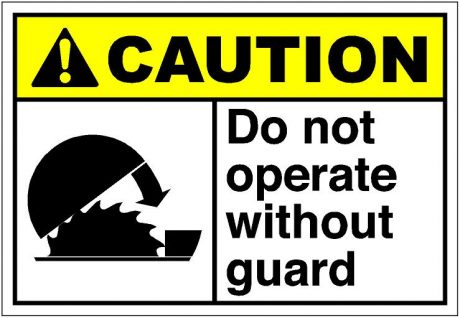Safety Talks – Machine Guarding

Machine guarding is crucial for protecting workers against preventable injuries such as crushed fingers or hands, amputations, burns, and blindness. Below is a basic overview of some of the more important points related to machine guarding.
Basic Terminology
Parts of the machine requiring guarding
- Point of Operation: the area where machine performs work on material
- Power Transmission Apparatus: Machine components that transmit energy such as belts, gears, flywheels, chans, pulleys, spindles, couplings and cams.
- Other Moving Parts: Reciprocating, rotating, traversing motions, auxiliary machine parts.
Types of mechanical motion that MUST be guarded
- Pinch Points: Points at which it is possible to be caught between moving parts, or between moving and stationary parts of a piece of equipment.
- Rotating: Circular motion of shafts with a protrusion sticking out can grip clothing or pull body parts into the point of operation.
- Reciprocating: Back-and-forth or up-and-down motions that may trap or strike a worker between the moving object and a fixed object.
- Traversing: Movement in straight, continuous line that may strike or catch an employee in a pinch or shear point between a moving and fixed object.
- Cutting: Action of sawing, boring, drilling, milling, slicing
- Punching: The action that results from a machine moving a slide (ram) to stamp a sheet of metal or other material.
- Shearing: Movement of a powered slide or knife during metal trimming or paper cutting.
- Bending: Action occuring when power is applied to a slide to draw or form metal or other materials.
Common Machines that require guards
- Circular waws
- Power feed planer
- Drill presses
- Reciprocating saws
- Shaper
- Grinding wheels
- Band saw
- Lathe
- Mechanical power press
- Jointer
- Sander
- Mortising machine
Further Discussion
- Identify all the machines in your shop that require guarding.
- Inspect your machines to ensure the guards are correctly positioned, intact and in place.
- Replace any guards that are broken or defective.
